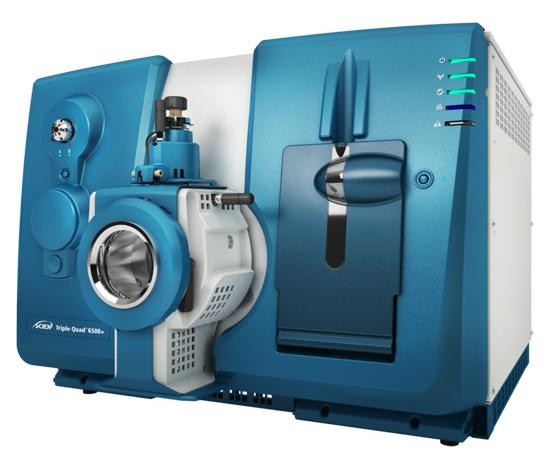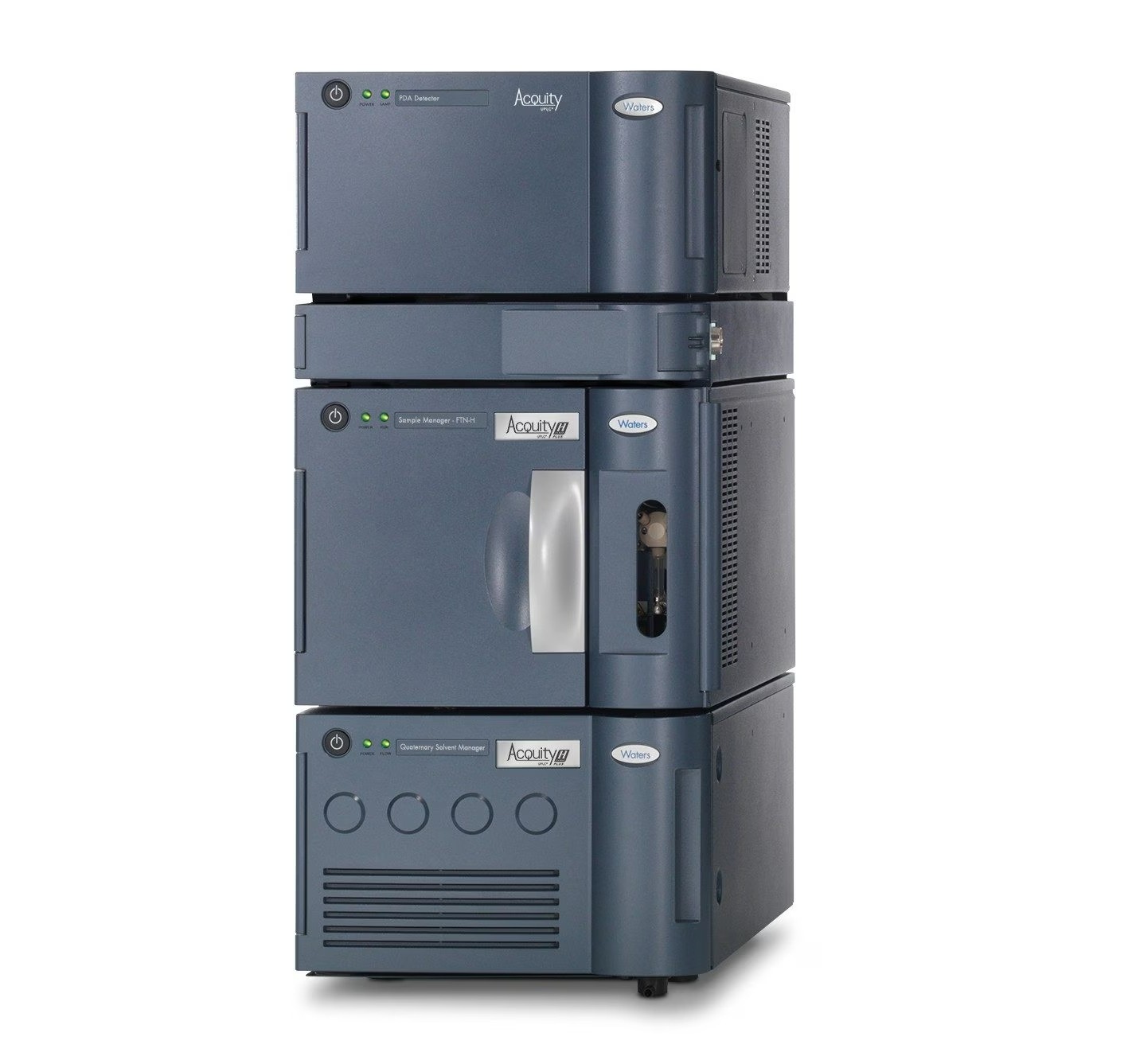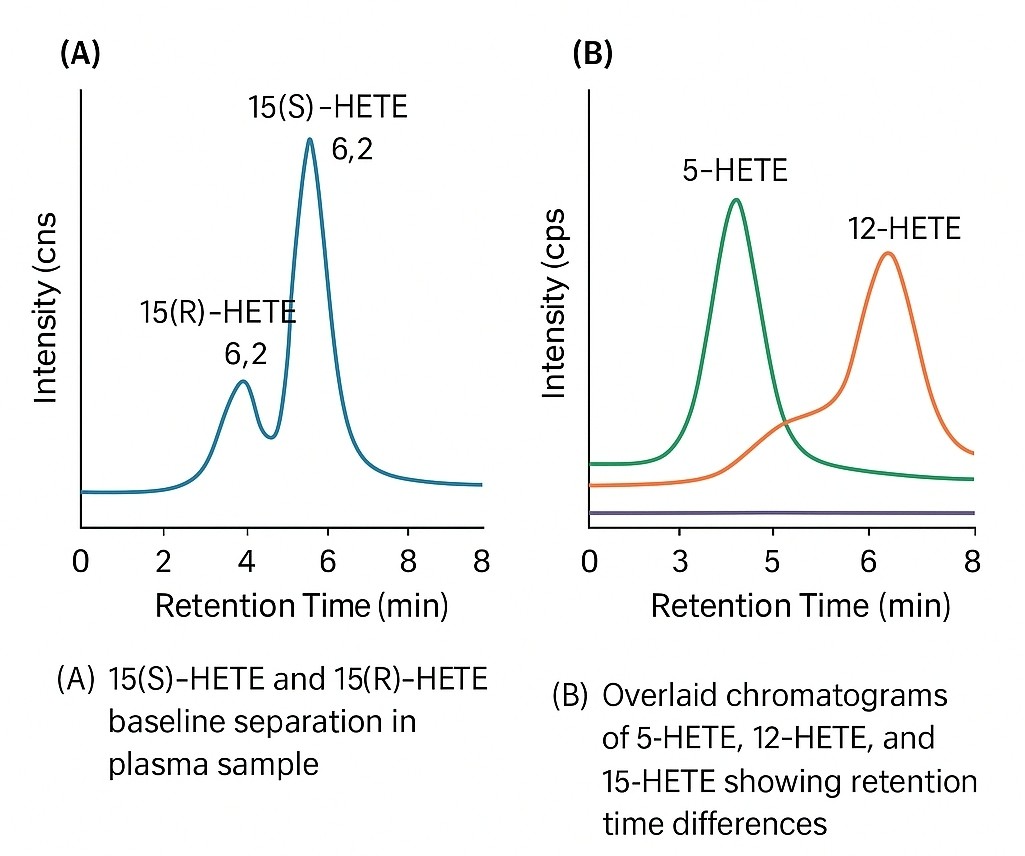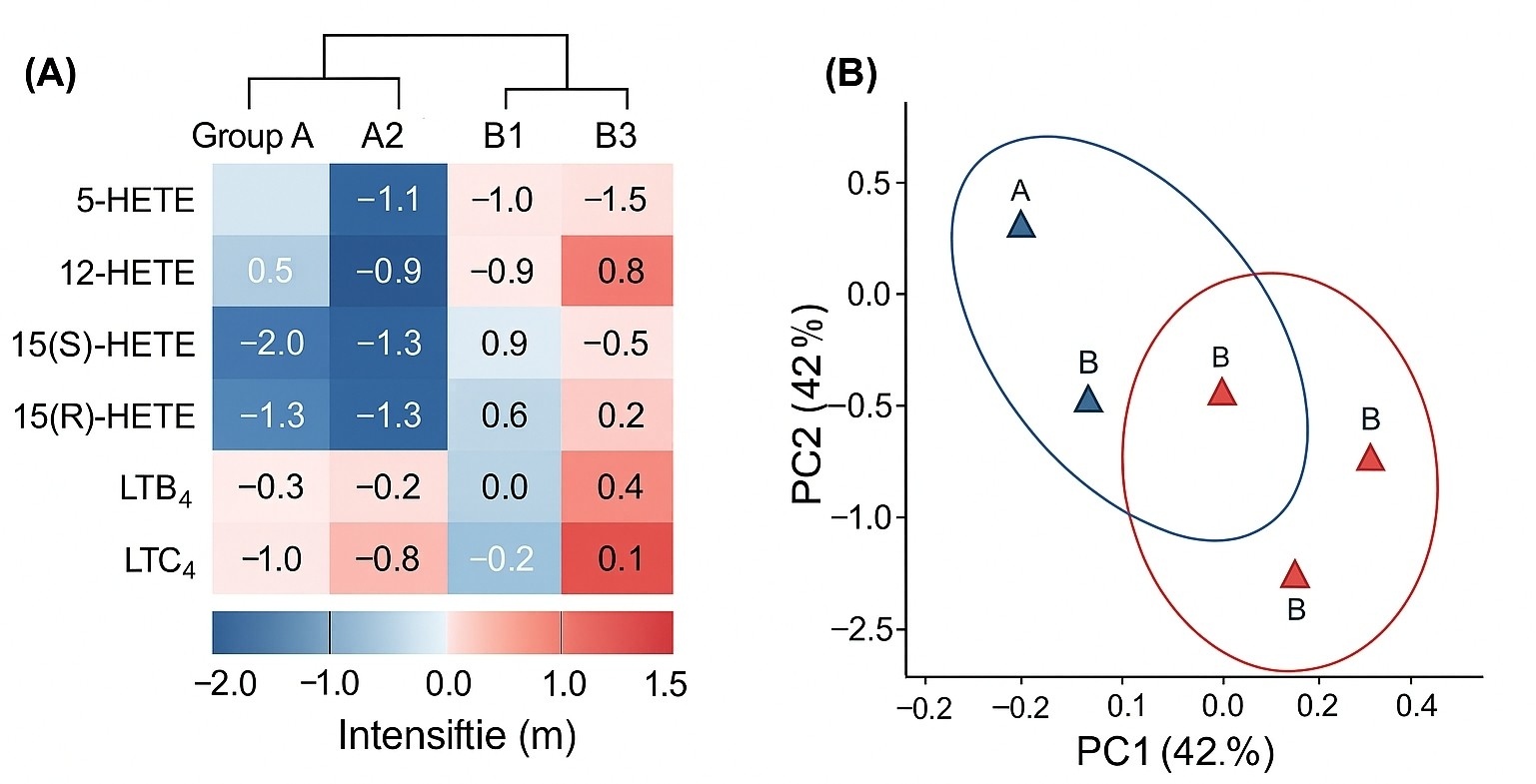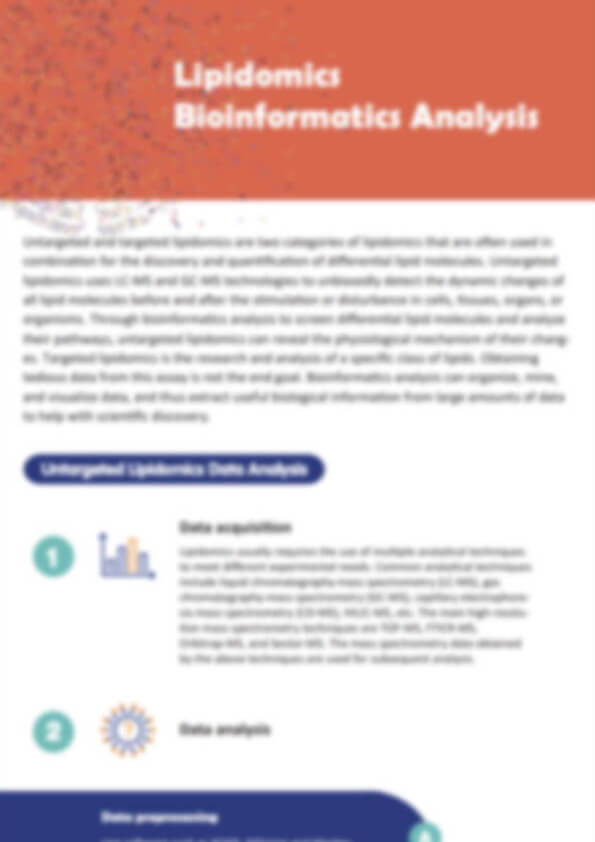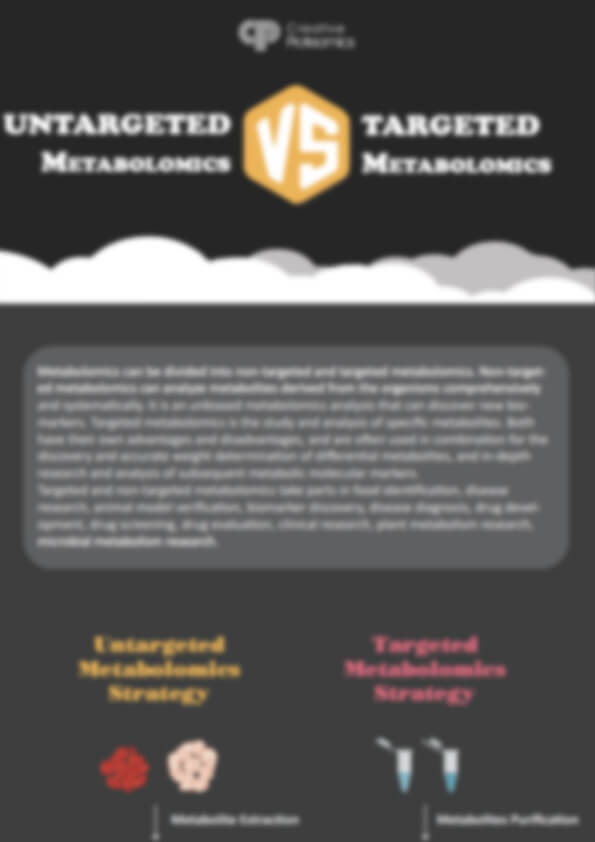Lipoxygenase Metabolite Profiling Service
At Creative Proteomics, we provide precise profiling of lipoxygenase (LOX) metabolites to advance your research in inflammation, immunity, and oxidative stress. We deliver comprehensive lipid metabolite profiling across 5-LOX, 12-LOX, and 15-LOX pathways using cutting-edge LC-MS/MS technology, offering high sensitivity, isomer-level resolution, and absolute quantification.
Problems We Solve
- Struggling to track lipid signaling pathways reliably?
- Need to identify complex networks of inflammatory mediators?
- Evaluating the regulatory effects of natural products or drugs on LOX pathways?
We deliver high-confidence quantitation of 40+ LOX-derived compounds to empower your research and discovery.
Service Highlights
- Targeted absolute quantification for high accuracy and reproducibility
- Isomer resolution, distinguishing key isomers like 15(S) vs 15(R), 9(S) vs 9(R)
- Comprehensive coverage of 5-LOX, 12-LOX, and 15-LOX pathways
- Customizable analysis panels tailored to sample type and research goals
- Compatible with diverse samples: plasma, tissue, cells, animal models
- Integrated data interpretation including statistical analysis and biological insights
Submit Your Request Now
×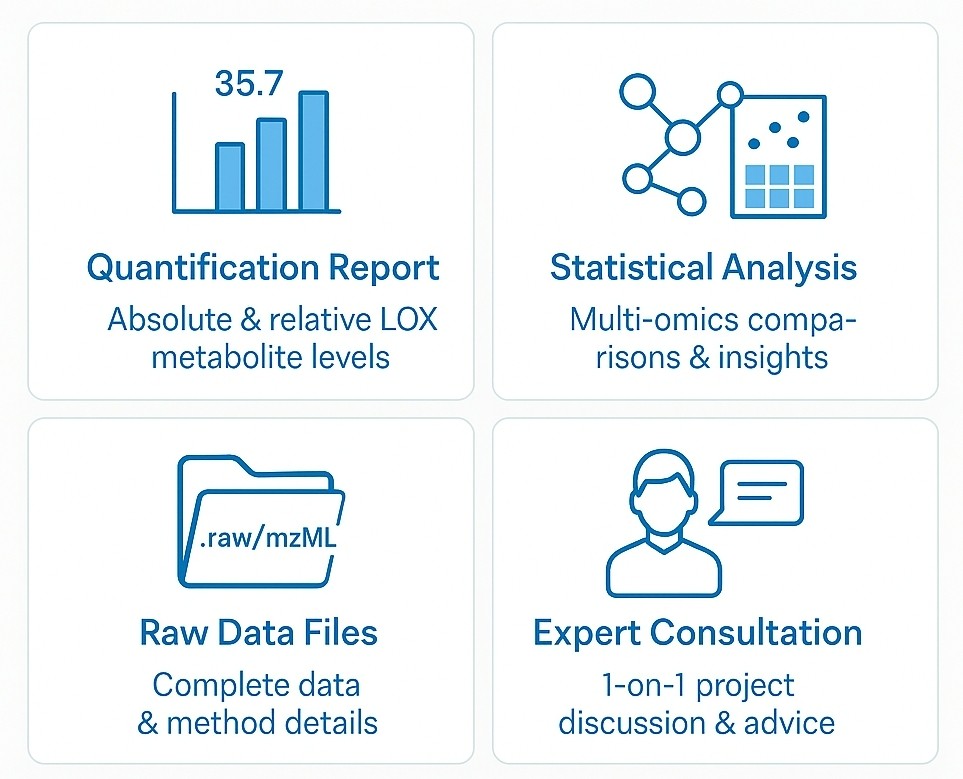
Deliverables You Can Expect:
- Detailed metabolite quantification report (absolute and relative amounts)
- Multi-omics comparison charts and statistical analysis
- Metabolic pathway maps with biological annotations
- Raw data files (.raw/.mzML) plus method parameters
- Expert consultation with 1-on-1 project review and interpretation
- What We Provide
- Advantages
- Technology Platform
- Sample Requirement
- Demo
- FAQ
Tailored Lipoxygenase Metabolite Profiling to Meet Complex Research Demands
Lipoxygenase (LOX) enzymes are central to the oxidative metabolism of polyunsaturated fatty acids, giving rise to a diverse range of bioactive lipid mediators such as hydroxy fatty acids, leukotrienes, lipoxins, and specialized pro-resolving mediators (SPMs). These metabolites play pivotal roles in cellular signaling, immune response modulation, inflammation resolution, and oxidative stress. Accurate profiling of LOX-derived metabolites is therefore essential for researchers investigating lipid signaling pathways, inflammation mechanisms, and redox biology.
At Creative Proteomics, our lipoxygenase metabolite profiling service is engineered to support lipidomics studies across a wide spectrum of biological samples and experimental models. Using high-sensitivity LC-MS/MS platforms and proprietary sample preparation protocols, we deliver reliable identification and absolute or relative quantification of a broad panel of LOX-derived metabolites with exceptional analytical specificity.
What Clients Typically Need?
Mechanistic Dissection of LOX Pathways
Many clients aim to map the specific activity of LOX isoforms (e.g., 5-LOX, 12-LOX, 15-LOX) under physiological or experimental conditions. We support this by delivering isomer-specific quantification of key metabolites such as:
- 5-HETE / 5-oxo-ETE (5-LOX pathway)
- 12-HETE (platelet-type 12-LOX)
- 15(S)-HETE / 15(R)-HETE (15-LOX-1 vs 15-LOX-2)
This allows clients to trace isoform-selective activity and investigate enzyme regulation.
Comprehensive Lipid Mediator Panel for Inflammation Research
Researchers studying inflammation, immune signaling, or resolution processes often require in-depth profiling of both pro-inflammatory and pro-resolving mediators derived from arachidonic acid (AA), docosahexaenoic acid (DHA), or eicosapentaenoic acid (EPA). Our expanded LOX panel supports:
- Detection of leukotrienes and lipoxins
- Analysis of SPMs such as resolvins and protectins
- Cross-comparison of COX-, LOX-, and CYP-derived mediators (optional add-on)
Oxidative Stress and Redox Biology Investigations
LOX-derived lipid peroxides and hydroxy fatty acids serve as sensitive markers of non-enzymatic lipid oxidation and oxidative cell injury. We provide quantitative data on oxidized linoleic acid metabolites (e.g., 9-HODE, 13-HODE) to help assess:
- Redox balance in disease models
- Impact of antioxidant treatments
- Lipid peroxidation status in response to stimuli
Nutritional, Metabolic, and Diet Intervention Studies
Clients investigating the effects of dietary polyunsaturated fatty acids (PUFAs) or supplements often need to monitor changes in lipid mediator profiles. We enable:
- Longitudinal tracking of LOX metabolites in blood or tissues
- Profiling of EPA/DHA-derived hydroxy metabolites (e.g., 17-HDHA, 14-HDHA)
- Integration with metabolic health markers for pathway correlation
Drug Discovery and Functional Screening
For pharmaceutical clients and screening labs, our service supports:
- Profiling of lipid mediators in response to LOX inhibitors or enzyme modulators
- Off-target analysis of compound effects on AA/DHA oxidation
- Dose-response characterization of small molecule activity on lipid mediator production
Lipoxygenase-Derived Metabolite Panel
| Analyte | Abbreviation | Precursor Fatty Acid | Associated LOX Isoform(s) | Notes |
|---|---|---|---|---|
| 5-Hydroxyeicosatetraenoic acid | 5-HETE | Arachidonic acid (AA) | 5-LOX | Key intermediate in leukotriene biosynthesis |
| 12-Hydroxyeicosatetraenoic acid | 12-HETE | AA | 12-LOX (platelet-type) | Involved in platelet activation |
| 15(S)-Hydroxyeicosatetraenoic acid | 15(S)-HETE | AA | 15-LOX-1 | Pro-resolving and anti-inflammatory roles |
| 15(R)-Hydroxyeicosatetraenoic acid | 15(R)-HETE | AA | Non-enzymatic or 15-LOX-2 | Stereo-isomer, oxidative stress marker |
| 5-Oxo-eicosatetraenoic acid | 5-oxo-ETE | AA | 5-LOX (via 5-HETE dehydrogenase) | Neutrophil chemoattractant |
| 8-Hydroxyeicosatetraenoic acid | 8-HETE | AA | Potential byproduct of LOX | Minor pathway component |
| 11-Hydroxyeicosatetraenoic acid | 11-HETE | AA | Oxidative product | Potential marker of lipid peroxidation |
| Leukotriene B4 | LTB4 | AA | 5-LOX | Potent pro-inflammatory mediator |
| 6-trans-Leukotriene B4 | 6-trans-LTB4 | AA | 5-LOX | Isomeric form of LTB4 |
| Lipoxin A4 | LXA4 | AA | 5-LOX/15-LOX interaction | Involved in resolution of inflammation |
| Lipoxin B4 | LXB4 | AA | 5-LOX/15-LOX interaction | Anti-inflammatory lipoxin |
| 9-Hydroxyoctadecadienoic acid | 9-HODE | Linoleic acid (LA) | 15-LOX or auto-oxidation | Oxidative stress marker |
| 13-Hydroxyoctadecadienoic acid | 13-HODE | LA | 15-LOX or auto-oxidation | Often used in redox biology studies |
| 13-Oxo-octadecadienoic acid | 13-oxo-ODE | LA | Secondary oxidation product | Reflects lipid peroxidation state |
| 17(S)-Hydroxy-docosahexaenoic acid | 17(S)-HDHA | DHA | 15-LOX | Precursor of D-series resolvins |
| 14(S)-Hydroxy-docosahexaenoic acid | 14(S)-HDHA | DHA | 12/15-LOX | Precursor of maresins |
| 18-Hydroxy-eicosapentaenoic acid | 18-HEPE | EPA | 15-LOX | Precursor of E-series resolvins |
| Protectin D1 | PD1 | DHA | 15-LOX | Specialized pro-resolving mediator (SPM) |
| Resolvin D1 | RvD1 | DHA | 15-LOX | Resolution-phase lipid mediator |
| Resolvin E1 | RvE1 | EPA | 15-LOX | Anti-inflammatory E-series resolvin |
| 5(S),15(S)-DiHETE | DiHETE | AA | Dual LOX involvement | Indicates cross-LOX enzymatic activity |
| 12(S)-Hydroxyeicosapentaenoic acid | 12(S)-HEPE | EPA | 12-LOX | Inflammatory signaling mediator |
| 15(S)-Hydroxyeicosapentaenoic acid | 15(S)-HEPE | EPA | 15-LOX | Lipid mediator with regulatory roles |
Key Features of Our Lipoxygenase Metabolite Profiling Service
- High Sensitivity: Detection limits down to ≤10 pg/mL for key LOX metabolites.
- Broad Coverage: Simultaneous quantification of 40+ lipid mediators, including HETEs, leukotrienes, lipoxins, resolvins.
- Stereoisomer Resolution: Baseline separation of S-/R-HETEs with<0.05 min retention time difference.
- Quantitative Precision: Intra- and inter-run CVs<12% across replicates.
- Dynamic Range: Linear quantification over 5–6 orders of magnitude (0.01–1000 ng/mL).
- Small Sample Volume: Requires only ≥50 µL plasma or ≥10 mg tissue per replicate.
- Internal Standards: Use of 10–15 isotope-labeled compounds for accurate absolute quantification.
- Optional Customization: Add up to 20 additional analytes with minimal method adjustment.
Methods and Instrumentation for Lipoxygenase Metabolites Analysis
| System Component | Model | Key Parameters |
|---|---|---|
| UPLC System | Waters ACQUITY UPLC | C18 reversed-phase column (2.1 × 100 mm, 1.7 μm); Column temp: 40°C; Flow: 0.3 mL/min |
| Mass Spectrometer | SCIEX QTRAP® 6500+ Triple Quadrupole | Electrospray Ionization (ESI), Negative Mode; Scheduled MRM acquisition |
| LC Gradient | Water (0.1% formic acid) / Acetonitrile (0.1% formic acid) | Gradient elution optimized for LOX-derived eicosanoids and docosanoids |
| Injection Volume | – | Typically 5–10 μL depending on sample matrix |
| MS Parameters | – | Optimized declustering potential, collision energy, and entrance potential per analyte |
Our Lipoxygenase Metabolite Assay Workflow
1. Sample Evaluation & Method Consultation
– Matrix review and panel customization based on research goals and species.
2. Lipid Extraction & Enrichment
– Solid-phase extraction (SPE) with class-specific cartridges for efficient isolation of LOX metabolites from complex matrices.
3. UPLC Separation
– High-resolution reversed-phase chromatography optimized for isomer-specific separation of lipid mediators.
4. Targeted LC-MS/MS Analysis
– Quantitative detection using scheduled MRM with stable isotope-labeled internal standards for each analyte class.
5. Data Processing & QC Assessment
– Rigorous peak integration, calibration curve fitting, internal standard normalization, and quality control across all samples.
6. Result Reporting & Optional Bioinformatics Support
– Delivery of a full data package with options for advanced statistical analysis, pathway visualization, and integration with multi-omics datasets.
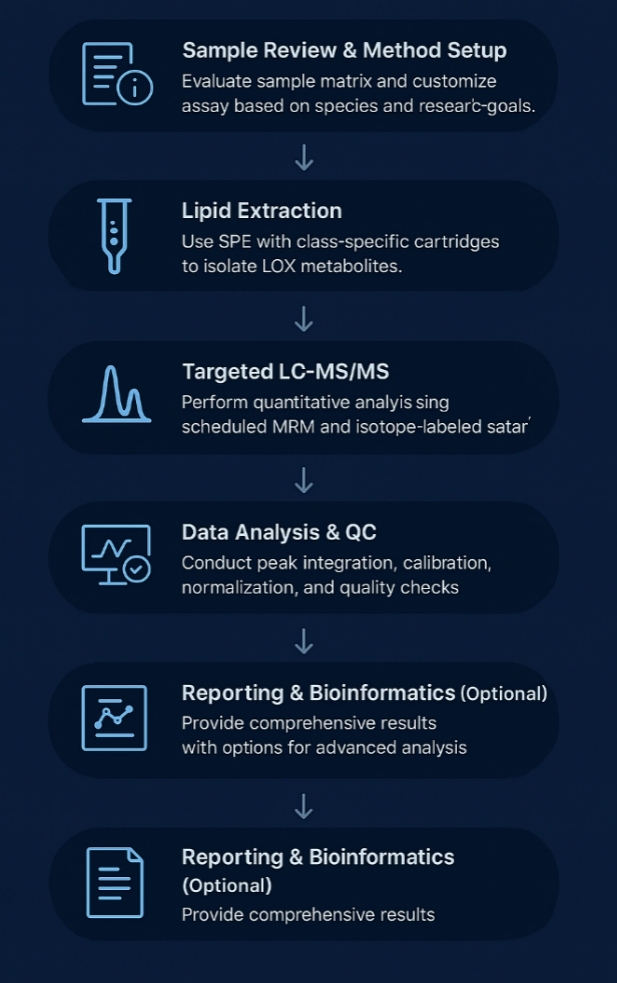
Sample Requirements for Lipoxygenase Metabolites Analysis Service
| Sample Type | Minimum Amount | Storage Condition | Transport Condition | Notes |
|---|---|---|---|---|
| Plasma / Serum | ≥ 50 µL | -80°C | Dry ice | Collect using EDTA tubes; avoid hemolysis |
| Tissue (e.g., liver, brain) | ≥ 10 mg | Snap-frozen in liquid N₂; store at -80°C | Dry ice | Rinse with cold saline to remove blood; store immediately after dissection |
| Cell Pellets | ≥ 1 × 10⁶ cells | -80°C | Dry ice | Wash twice with PBS; avoid serum contamination |
| Cell Culture Supernatant / Media | ≥ 500 µL | -80°C | Dry ice | Avoid repeated freeze–thaw; serum-free media preferred |
| Bronchoalveolar Lavage Fluid (BALF) | ≥ 200 µL | -80°C | Dry ice | Collect and freeze immediately |
| Urine | ≥ 500 µL | -80°C | Dry ice | Collect midstream; avoid preservatives |
Demo Results
FAQ of Lipoxygenase Metabolite Profiling Service
Can this service distinguish between enzymatic and non-enzymatic oxidation products?
Yes. Our targeted panel includes both enzymatically derived metabolites (e.g., 15(S)-HETE, LTB4) and non-enzymatic oxidation markers (e.g., 13-HODE, 8-HETE), allowing researchers to infer the contribution of LOX pathways versus oxidative stress-induced lipid peroxidation.
Are stereoisomers such as 15(S)-HETE and 15(R)-HETE resolved and reported separately?
Yes. We employ chiral-optimized UPLC methods that can separate and quantify S/R isomers where applicable. If stereochemistry is relevant to your study, please indicate this during project setup.
Is untargeted profiling of novel or low-abundance LOX metabolites available?
We offer both targeted and hybrid-targeted approaches. For discovery-driven studies, high-resolution LC-HRMS workflows (e.g., Q Exactive™ Plus) are available to detect untargeted LOX-related metabolites beyond the standard panel.
Can this platform be applied to in vitro cell stimulation or inhibitor screening experiments?
Absolutely. Our platform is frequently used to monitor dynamic lipid mediator responses in cell culture models exposed to stimuli (e.g., LPS, cytokines) or LOX inhibitors. Time-course and dose-response designs are supported.
Is matrix-specific optimization required for uncommon sample types?
Yes. While we routinely process plasma, tissue, and culture media, other matrices (e.g., cerebrospinal fluid, synovial fluid) may require customized extraction protocols. Please consult us prior to submission.
What type of data deliverables will I receive?
You will receive a comprehensive report including absolute or relative quantification of each analyte, QC metrics, annotated chromatograms, and detailed method parameters. Raw data files (e.g., .wiff, .raw) are available upon request.
Can this service support correlation with cytokine, metabolomics, or transcriptomics datasets?
Yes. Lipid mediator profiles can be integrated with other omics datasets for systems biology or pathway analysis. We can assist with pathway mapping if needed.
Learn about other Q&A about proteomics technology.
Publications
Here are some of the metabolomics-related papers published by our clients:

- White matter lipid alterations during aging in the rhesus monkey brain. 2024. https://doi.org/10.1007/s11357-024-01353-3
- Characterization of Dnajc12 knockout mice, a model of hypodopaminergia. 2024. https://doi.org/10.1101/2024.07.06.602343
- Annexin A2 modulates phospholipid membrane composition upstream of Arp2 to control angiogenic sprout initiation. 2023. https://doi.org/10.1096/fj.202201088R
- Lipid Membrane Engineering for Biotechnology (Doctoral dissertation, Aston University). 2023. https://doi.org/10.48780/publications.aston.ac.uk.00046663
- Loss of G0/G1 switch gene 2 (G0S2) promotes disease progression and drug resistance in chronic myeloid leukaemia (CML) by disrupting glycerophospholipid metabolism. 2022. https://doi.org/10.1002/ctm2.1146
- Summative and ultimate analysis of live leaves from southern US forest plants for use in fire modeling. 2020. https://doi.org/10.1152/ajpgi.00184.2023
- Multi‐omics identify xanthine as a pro‐survival metabolite for nematodes with mitochondrial dysfunction. 2019. https://doi.org/10.15252/embj.201899558
